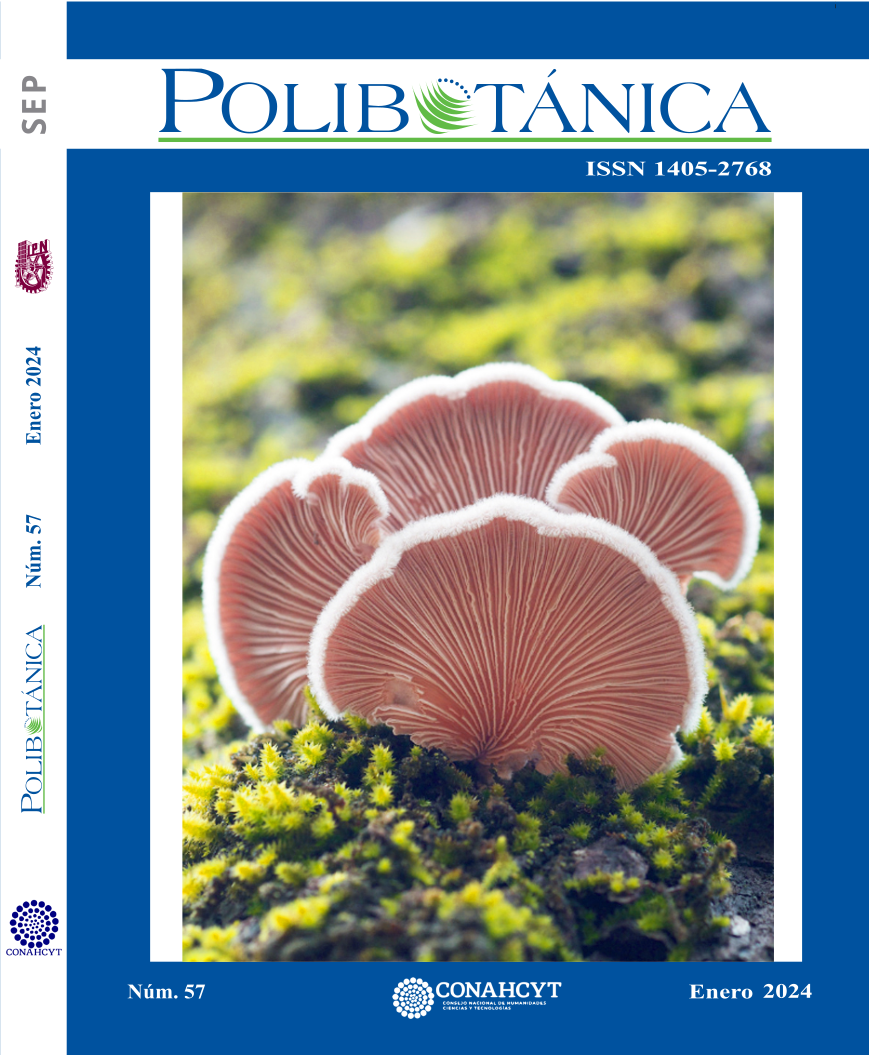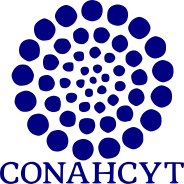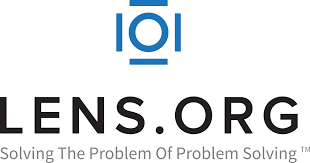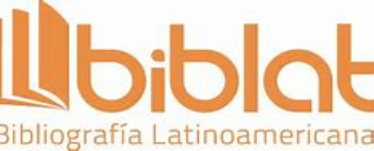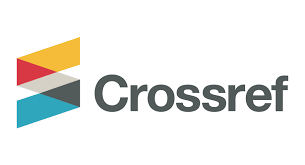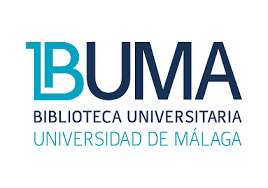Compuestos fenólicos, capacidad antioxidante y actividad antihipertensiva de membrillo (Cydonia oblonga Miller) cultivado en Zacatecas, México
DOI:
https://doi.org/10.18387/polibotanica.57.12Palabras clave:
Fitoquímicos, capacidad antioxidante, actividad antihipertensiva, flavonoidesResumen
Las frutas contienen niveles altos de compuestos biológicamente activos que imparten beneficios a la salud, Zacatecas ocupa los primeros lugares en producción de membrillo a nivel nacional. El objetivo del presente estudio fue evaluar el contenido y perfiles de compuestos fenólicos, así como las propiedades antioxidante y antihipertensiva del membrillo cultivado en Zacatecas. Se realizaron extractos metanólicos para evaluar la capacidad antioxidante y se determinó por los métodos DPPH y ABTS. La actividad antihipertensiva fue evaluada mediante la inhibición de la enzima convertidora de angiotensina I, presentando una inhibición del 45% y el perfil de compuestos fenólicos se determinó por HPLC-DAD. El contenido de flavonoides y taninos fue de 422 y 250 mg equivalentes de catequina/100 g (bs); para fenólicos totales fue de 122 mg equivalentes de ácido gálico/100 g (bs) y para cumarinas de 46 mg equivalentes de cumarina/100 g (bs). En cuanto a la capacidad antioxidante, se obtuvieron niveles de 6,853 y 11,050 μmol equivalentes de Trolox/100 g (bs) para DPPH y ABTS, respectivamente. Se identificaron cuatro tipos de flavonoides catequina, quercetina, rutina y mericetina y dos tipos de ácidos fenólicos ferúlico y sinápico, estos compuestos fenólicos pueden ser los responsables de los beneficios a la salud del membrillo.
Referencias
Aguayo-Rojas, J., Mora-Rochín, S., Tovar-Jiménez, X., Rochín-Medina, J. J., & Navarro-Cortez, R.O. (2022). Fitoquímicos y propiedades nutraceúticas de durazno (Prunus persica L.) cultivado en Zacatecas. Polibotánica, 53, 151–166.
Al-matani, S. K., Said Al-Wahaibi, R. N., & Amzad Hossain, M. (2015). In vitro evaluation of the total phenolic and flavonoid contents and the antimicrobial and cytotoxicity activities of crude fruit extracts with different polarities from Ficus sycomorus. Pacific Science Review A: Natural Science and Engineering, 17(3), 103-108.
Álvarez-Suarez, J. M., Giamperi, F., Tulipani, S., Casoli, T., Di Stefano, G., Gónzalez-Paramás, A. M., & Battino, M. (2014). One-month strawberry-rich anthocyanin supplementation ameliorates cardiovascular risk, oxidative stress markers and platelet activation in humans. The Journal of Nutritional Biochemestry, 25(3), 289-294.
Arion, C. M., Tabart, J., Kevers, C., Niculaua, M., Filimon, R., Beceanu, D., & Dommes, J. (2014). Antioxidant potential of different plum cultivars during storage. Food Chemistry, 146(1), 485-491.
Arranz, S., Saura-Calixto, F., Shaha, S., & Kroon, P. A. (2009). High contents of nonextractable polyphenols in fruits suggest that polyphenol contents of plant foods have been underestimated. Journal of Agricultural and Food Chemistry, 57(16), 7298–7303.
Atanasov, A. G., Waltenberger, B., Wenzig, E. M. P., Linder, T., Wawrosch, C., Uhrin, P., Temml, V., Wang, L., Schwaiger, S., Heiss, E. H., Rollinger, J. M., Schuster, D., Breuss, J. M., Bochkov, V., Mihovilovic, M. D., Kopp, B., Bauer, R., Dirscha, V. M., & Stuppner, H. (2015). Discovery and resupply of pharmacologically active plant-derived natural products: a review. Biotechnology Advances, 33(8), 1582–1614.
Balasuriya, N., & Rupasinghe, H. P. V. (2012). Antihypertensive properties of flavonoid-rich apple peel extract. Food Chemistry, 135(4), 2320–2325.
Bhagani, S., Kapil, V., & Lobo, M. D. (2018). Hypertension. Medicine, 46(9), 509–515.
Belhadj, F., Somrani, I., Aissaaoui, N., Messaoud, C., Boussaid, M., & Marzouki, M. N. (2016). Bioactive compounds contents, antioxidant and antimicrobial activities during ripening of Prunus persica L. varieties from the North West of Tunisia. Food Chemistry, 204, 29-36.
Ben Ahmed, C., Ben Rouina, B., Sensoy, S., & Boukhriss, M. (2009). Saline water irrigation effects on fruit development, quality, and phenolic composition of virgin olive oils, cv. Chemlali. Journal of agricultural and food chemistry, 57(7), 2803-2811.
Borges Bubols, G., Vianna, D. R., Remon, A. M., Poser, G. V., Raventos, M. L., Eifler Lima, V. L., & Garcia, S. C. (2013). The antioxidant activity of coumarins and flavonoids. Mini Reviews in Medicinal Chemistry. 13(3), 318-322.
Cardador-Martínez, A., Loarca-Piña, G., & Ooman, B. D. (2002). Antioxidant activity in common beans (Phaseolus vulgaris L.). Journal of Agricultural and Food Chemistry, 50(24), 6975-6980.
Chakraborty, R., & Roy, S. (2021). Angiotensin-converting enzyme inhibitors from plants: A review of their diversity, modes of action, prospects, and concerns in the management of diabetes-centric complications. Journal of Integrative Medicine, 19(6), 478-492.
Cheplick, S., Kwon, Y. I., Bhowmik, P., & Shetty, K. (2010). Phenolic-linked variation in strawberry cultivars for potential dietary management of hyperglycemia and related complications of hypertension. Bioresource Technology, 101(1), 404-413.
Davis, R. A., Maresca, V. A., & Supuran, C. T. (2013). Natural product coumarins that inhibit human carbonic anhydrases. Bioorganic and Medicinal Chemistry, 21(6), 1539-1542.
Fattouch, S., Caboni, P., Coroneo, V., Tuberoso, C., Angioni, A., Dessi, S., Marzouki, N., & Cabras P. (2007). Antimicrobial activity of Tunisian quince (Cydonia oblonga Miller) pulp and peel polyphenolic extracts. Journal of Agricultural and Food Chemistry, 55(3), 963–969.
Fernández, K., & Labra, J. (2013). Simulated digestion of proanthocyanidins in grape skin and seed extracts and the effects of digestion on the angiotensin I-converting enzyme (ACE) inhibitory activity. Food Chemistry, 139(1-4), 196-202.
Hamauzu, Y., Inno, T., Kume, C., Irie, M., & Hiramatsu, K. (2006). Antioxidant and antiulcerative properties of phenolics from Chinese quince, quince, and apple fruits. Journal of Agricultural and Food Chemistry, 54(3), 765–772.
Karadenz, F., Burdurlu, H. S., Koca, N., & Soyer, Y. (2005). Antioxidant activity of selected fruits and vegetables grown in Turkey. Turkish Journal of Agriculture and Forestry, 29(4), 297–303.
Kessy, H. N., Wang, K., Zhao, L., Zhou, M., & Hu, Z. (2018). Enrichment and biotransformation of phenolic compounds from litchi pericarps with angiotensin I-converting enzyme (ACE) inhibition activity. LWT-Food Science and Technology, 87(3), 301-309.
Kim, D. O., Jeong, S. W., & Lee, C. Y. (2003). Antioxidant capacity of phenolic phytochemicals from various cultivars of plums. Food Chemistry, 81(3), 321-326.
Kubrak, T., Podgórski, R., & Stompor, M. (2017). Natural and synthetic coumarins and their pharmacological activity. European Journal of Clinical and Experimental Medicine, 15(2), 169–175.
Lacaille, M. A., Franck, U., & Wagner, H. (2001). Search for potential angiotensin converting enzyme (ACE)-inhibitors from plants. Phytomedicine, 8(1), 47-52.
Laurent, S. (2017). Antihypertensive drugs Review. Pharmacological Research, 124, 116-125.
Larson, A., Symons, J.D., & Jalili, T. (2010). Quercetin: a treatment for hypertension?—a review of efficacy and mechanisms. Pharmaceuticals, 3(1), 237–250.
Le Bourvellec, C., Le Quere, J. M., Sanoner, P., Guyot, S., & Drilleau, J. F. (2004). Inhibition of apple polyphenol oxidase activity by procyanidins and polyphenol oxidation products. Journal of Agricultural and Food Chemistry, 52(1), 122–130.
Le Bourvellec, C., Picot, M., & Renard, C. M. G. C. (2006). Size exclusión chromatography of procyanidins: Comparison between apple and grape procyanidins and application to the characterization of fractions of high degrees of polymerization. Analityca Chimica Acta, 563: 33–43.
Legua, P., Serrano Melgarejo, P. M., Valero, D., Martinez, J. J., Martinez, R., & Hernandez, F. (2013). Quality parameters, biocompounds and antioxidant activity in fruits of nine quince (Cydonia oblonga Miller) accessions. Scientia Horticulturae, 154, 61–65.
McDougall, G. J., Kulkarni, N. N., & Stewart, D. (2009). Berry polyphenols inhibit pancreatic lipase activity in vitro. Food Chemistry, 115(1), 193-199.
Mena, P., Garcia-Viguera, C., Navarro-Rico, J., Moreno, D. A., Bartual, J., & Saura, D. (2011). Phytochemical characterisation for industrial use of pomegranate (Punica granatum L.) cultivars grown in Spain. Journal of Science Food and Agriculture, 91(10), 1893–1906.
Mokrani, A., & Madani, K. (2016). Effect of solvent, time and temperature on the extraction of phenolic compounds and antioxidant capacity of peach (Prunus persica L.) fruit. Separation and Purification Technology, 162(13), 68-76.
Mueller, R. L. (2004). First-generation agents: Aspirin, heparin and coumarins. Best Practice and Research Clinical Haematology, 17(1), 23–53.
Ojeda, D., Jiménez-Ferrer, E., Zamilpa, A., Herrera-Arellano, A., Tortoriello, J., & Alvarez, L. (2010). Inhibition of angiotensin converting enzyme (ACE) activity by the anthocyanins delphinidin and cyanidin-3-Osambubiosides from Hibiscus sabdariffa. Journal of Ethnophamacology, 127(1), 7-10.
Oszmian´ ski, J., Wojdyło, A., & Kolniak, J. (2009). Effect of enzymatic mash treatment and storage on phenolic composition, antioxidant activity, and turbidity of cloudy apple juice. Journal of Agricultural and Food Chemistry, 57(15), 7078–7085.
Park, Y. S., Leontowicz, H., Leontowicz, M., Namiesnik, J., Suhaj, M., Cvikrová, M., & Goristein, S. (2011). Comparison of the contents of bioactive compounds and the level of antioxidant activity in different kiwifruit cultivars. Journal of Food Composition and Analysis, 24(7), 963-970.
Prior, R. L., & Wu, X. (2013). Diet antioxidant capacity: Relationships to oxidative stress and health. American Journal of Biomedical Sciences, 5(2), 126-139.
Re, R., Pellegrini, N., Proteggente, A., Yang, M., & Rice-Evans, C. (1999). Antioxidant activity applying an improved ABTS radical cation decolorization assay. Free Radical Biology and Medicine, 26(9-10), 1231-1237.
Rocha da Costa, C. A., Gilson, G., Lucinda Machado, G. G., Rodrigues, L. J., Araújo de Barros, H. E., Lima Natarelli, C. V., & de Barros Vilas Boas, E. V. (2023). Phenolic compounds profile and antioxidant activity of purple passion fruit's pulp, peel and seed at different maturation stages. Scientia Horticulturae, 321, 112244.
Santos, P. H. S., & Silva, M. A. (2008). Retention of Vitamin C in Drying Processes of Fruits and Vegetables—A Review. Drying Technology, 26(12), 1421–1437.
Sezer Senol, F., Skalicka Wozniak, K., Hassan Khan, M. T., Erdogan Orhan, I., Sener, B., & Głowniak, K. (2011). An in vitro and in silico approach to cholinesterase inhibitory and antioxidant effects of the methanol extract, furanocoumarin fraction, and major coumarins of Angelica officinalis L. fruits. Phytochemistry Letters, 4(4), 462–467.
Silva, B. M., Andrade, P. B., Martins, R. C., Seabra, R. M., & Ferreira, M. A. (2006). Principal component analysis as tool of characterization of quince (Cydonia oblonga Miller) jam. Food Chemistry, 94(4), 504–512.
Singleton, V. L., Orthofer, R., & Lamuela-Raventós, R.M. (1999). Analysis of total phenols and other oxidation substrates and antioxidant by means of Folin-Ciocalteu reagent. Methods in Enzymology, 299, 152-178.
Soares e Silva, L., Santos da Silva, L., Brumano, L., Stringheta P. C., de Oliveira-Pinto, M. A., Moreira Dias, L. O., de Sá Martins-Muller, C., Scio, E., Luis-Fabri, R., Castro, H. C., & Henriques do Amaral M. P. (2012). Preparation of dry extract of Mikania glomerata Sprengel (Guaco) and determination of Its coumarin levels by Spectrophotometry and HPLC-UV. Molecules. 17(9), 10344-10354.
Stojanovic, B. T., Mitic, S. S, Stojanovic, G. S, Mitic, M. N., Kostic, D. A., Paunovic, D. D., Arsic, B. B., & Pavlovic, A. N. (2017). Phenolic profiles and metal ions analyses of pulp and peel of fruits and seeds of quince (Cydonia oblonga Mill.). Food Chemistry, 232, 466–475.
Szychowski, P. J., Munera-Picazo, S., Szumny, A., Carbonell-Barrachinaa, A. A., & Hernandez, F. (2014). Quality parameters, bio-compounds, antioxidant activity and sensory attributes of Spanish quinces (Cydonia oblonga Miller). Scientia Horticulturae, 165, 163–170.
Szychowski, P. J., Lech, K., Sendra-Nadala, E., Hernández, F., Figiel, A., Wojdyło, A., & Carbonell-Barrachina, A. A. (2018). Kinetics, biocompounds, antioxidant activity, and sensory attributes of quinces as affected by drying method. Food Chemistry, 255, 157–164.
Teleszko, M, & Wojdyło, A. (2015). Comparison of phenolic compounds and antioxidant potential between selected edible fruits and their leaves. Journal of Functional Foods. 14, 736–746.
Valdez Morales, M., Espinoza Alonso, L. G., Espinoza Torres, L. C., Delgado Vargas, F., & Medina Godoy, S. (2014).Phenolic Content and Antioxidant and Antimutagenic Activities in Tomato Peel, Seeds, and Byproducts. Journal of Agricultural and Food Chemistry, 62(23), 5281-9.
Vidal, S., Francis, L., Noble, A., Kwiatkowski, M., Cheynier, V., & Waters, E. (2004). Taste and mouth-feel properties of different types of tannin-like polyphenolic compounds and anthocyanins in wine. Analytical Chemistry Acta, 513(1), 57–65.
Wang, L., Saito, M., Tatsumi, E., & LI, L. (2003). Antioxidative and Angiotensin I-Converting Enzyme Inhibitory Activities of Sufu (Fermented Tofu) Extracts. Japan Agricultural Research Quarterly: JARQ, 37(2), 129-132.
Wojdyło, A., Oszmian´ ski, J., & Bielicki, P. (2013). Polyphenolic composition, antioxidant activity, and polyphenol oxidase (PPO) activity of quince (Cydonia oblonga Miller) varieties. Journal of Agricultural and Food Chemistry, 61(11), 2762–2772.
Wojdyło, A., Teleszko, M., & Oszmianski, J. (2014). Antioxidant property and storage stability of quince juice phenolic compounds. Food Chemistry, 152, 261–270.
Xu, B. J., & Chang, S. K. (2007). A Comparative Study on Phenolic Profiles and Antioxidant Activities of Legumes as Affected by Extraction Solvents. Journal of Food Science, 72(2), 5159-5166.
Zaouay, F, Mena, P., Garcia-Viguera, C, & Mars, M. (2012). Antioxidant activity and physico-chemical properties of Tunisian grown pomegranate (Punica granatum L.) cultivars. Industrial Crops and Products, 40, 81–89.
Zhang, K., Ding, W., Sun, J., Zhang, B., Lu, F., Lai, R., Zou, Y., & Yedid, G. (2014). Antioxidant and antitumor activities of 4-arylcoumarins and 4-aryl-3,4-dihydrocoumarins. Biochimie, 107, 234-239.
Zhang, T., Zhong, S., Hou, L., Li, T., Xing, X., Guan, T., Zhanga, J., & Wang, Y. (2018). Estrogenic properties of coumarins and meroterpene from the fruits of Cullen corylifolium: Experimental and computational studies. Phytochemistry, 152, 148–153.
Descargas
Publicado
Número
Sección
Licencia

Polibotánica por Departamento de Botánica de la Escuela Nacional de Ciencias Biológicas del Instituto Politécnico Nacional se distribuye bajo una Licencia Creative Commons Atribución-NoComercial-CompartirIgual 4.0 Internacional.

